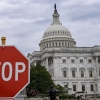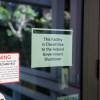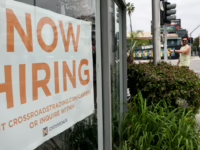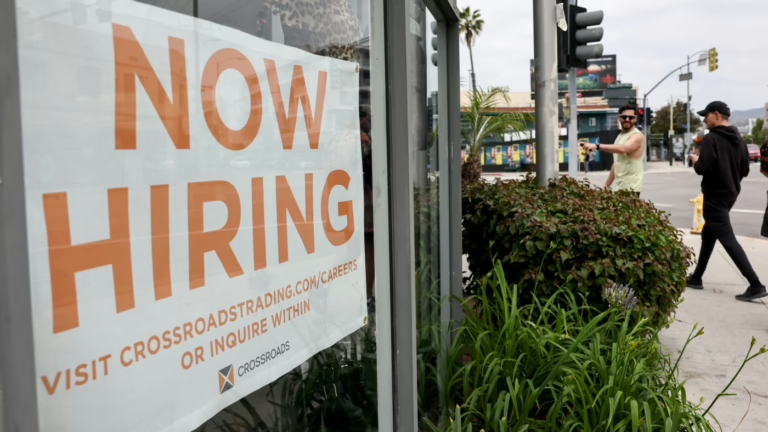The Labor Department’s monthly employment and unemployment report was delayed Friday amid the government shutdown, leaving employers and policymakers in the dark about the labor market’s current state.
Mario Tama/Getty Images North America
hide caption
toggle caption
Mario Tama/Getty Images North America
For those tracking employment trends, the first Friday of each month is typically a highly anticipated event. This is when the U.S. Labor Department releases its detailed report on job creation and unemployment rates, a key economic indicator closely monitored by analysts and investors alike.

However, this October’s first Friday brought disappointment instead of data, as the government shutdown forced a delay in the release of the jobs report.
Rather than eagerly refreshing her screen at 8:30 a.m. to analyze the latest figures, economist Allison Shrivastava found herself with unexpected free time.
“Looks like I’ll just enjoy my coffee a bit longer,” Shrivastava, who works at the job search platform Indeed, remarked. “Maybe take the dog for a longer walk than usual.”
The significance of the monthly jobs report
The monthly employment report is among the most influential economic releases from the government. It can sway financial markets depending on whether hiring numbers exceed or fall short of expectations. Beyond headline figures, it provides granular insights into which sectors are expanding or contracting and tracks workforce participation trends.
“Labor economists eagerly await this report every month,” says Daniel Zhao, chief economist at Glassdoor.
Unfortunately, this month the Labor Department’s analysts responsible for compiling the data have been furloughed due to the shutdown, postponing the report’s publication until federal operations resume.
The official website where the report is normally posted displayed a message stating, “This website is currently not being updated due to the suspension of Federal government services. Updates will resume once the government reopens.”
Forecasts ahead of the report
Prior to the delay, economists anticipated the September report would reveal an increase of roughly 50,000 jobs, a modest improvement over August’s 22,000 but a significant slowdown compared to the 240,000 jobs added during the same month last year.

Some of this deceleration is attributed to stricter immigration enforcement policies reducing the available workforce. However, it remains unclear how much of the slowdown stems from fewer job openings versus a shrinking labor pool.
“It’s widely accepted that the rapid job growth seen last year isn’t sustainable, especially with a decline in foreign-born workers,” explains Betsey Stevenson, an economist at the University of Michigan and former White House economist during the Obama administration.
Recent months have seen job gains primarily in healthcare, a sector typically resilient to economic fluctuations.
Challenges in securing employment
While layoffs have been relatively rare, those seeking their first job face increasing difficulties.
“Due to the prevailing uncertainty, both employers and job seekers seem to be cautiously waiting before making decisions,” notes Shrivastava from Indeed.
For now, anyone hoping to glean insights from the jobs report will have to wait.

The Frances Perkins Department of Labor Building in Washington, D.C., photographed on August 4, 2025.
Anna Moneymaker/Getty Images North America
hide caption
toggle caption
Anna Moneymaker/Getty Images North America
Until the government reopens, businesses and policymakers must rely on estimates and partial data to assess economic conditions. This is especially challenging during periods of economic change, akin to navigating a twisting road at night without headlights or GPS guidance.
“In times of economic transition, accurate data becomes even more crucial,” Stevenson emphasizes.
Potential delays in inflation data
While alternative sources like payroll processors and online job listings provide some labor market insights, they cannot replace the comprehensive scope of the federal government’s surveys, despite recent staffing cuts and leadership changes in the Labor Department.
“No other data source comes close to capturing the employment status of tens of millions of workers,” Stevenson adds.
Beyond the jobs report, the shutdown has also interrupted data collection for upcoming releases, including the September inflation report scheduled for publication within the next two weeks.
Historical precedent shows that the 16-day government shutdown in 2013 caused delays in numerous economic reports over the following months.
Glassdoor’s Zhao remains hopeful for a swift resolution so that the monthly jobs report can return to its regular schedule, allowing economists and the public to once again eagerly anticipate its release.
“We’re keeping our fingers crossed,” he says.
























